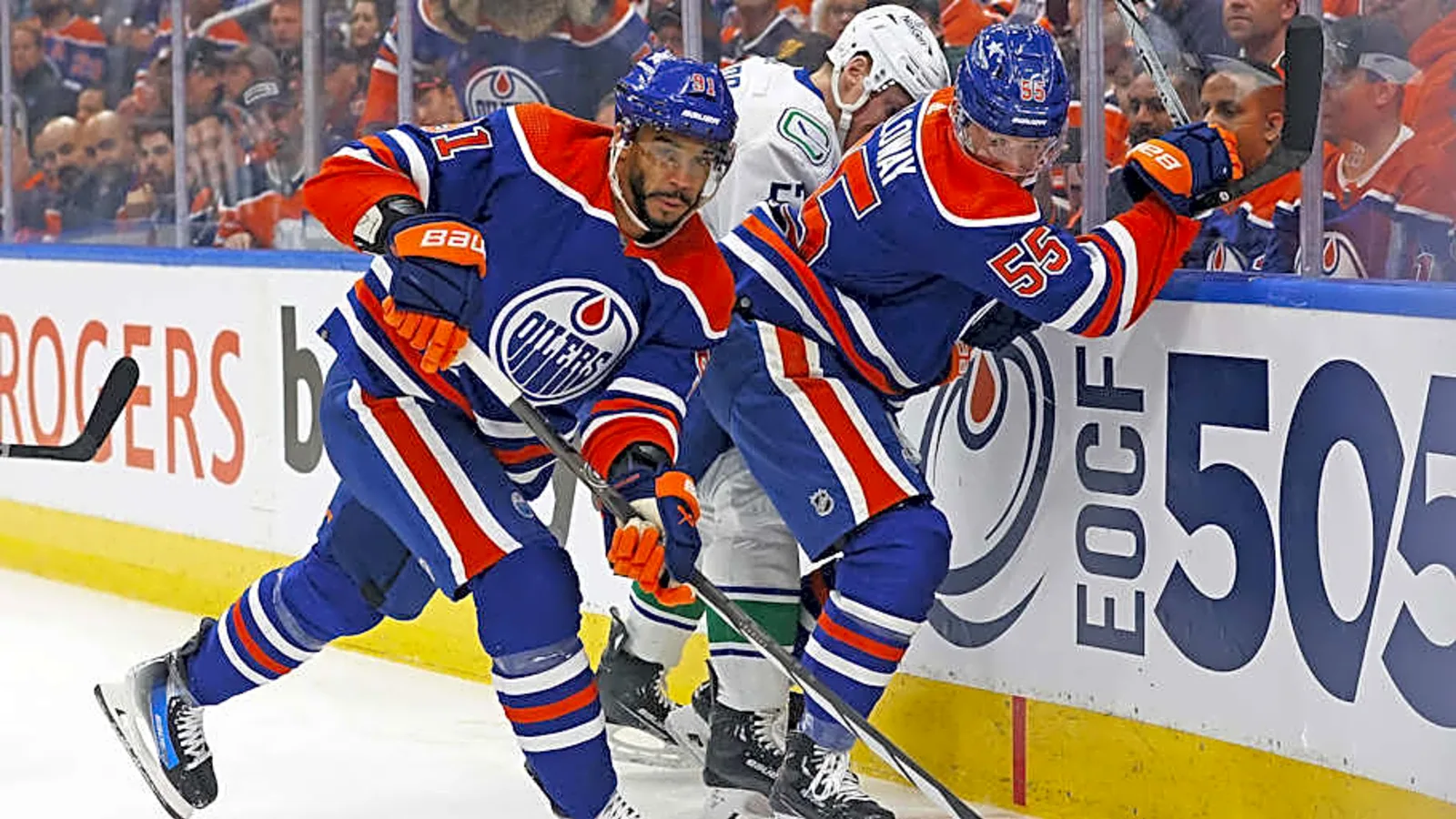Edmonton Oilers Trade Evander Kane to Vancouver Canucks in Blockbuster Division Shake-Up
The NHL’s Pacific Division witnessed a seismic shift as the Edmonton Oilers and Vancouver Canucks finalized a high-profile trade, sending veteran power forward Evander Kane north to British Columbia. The deal, which came together after weeks of speculation, marks a significant move for both franchises as they position themselves for playoff contention. Kane, a polarizing yet undeniably talented winger, brings a unique blend of physicality, scoring touch, and postseason experience to a Canucks team eager to bolster its top-six forward group. Meanwhile, the Oilers part ways with a key piece of their core, signaling a potential shift in their roster construction as they navigate salary cap constraints and long-term planning.
Kane’s tenure in Edmonton was a rollercoaster, defined by both on-ice production and off-ice controversy. Since joining the Oilers in 2022, the 32-year-old winger tallied 78 goals and 138 points in 186 games, providing a crucial net-front presence alongside superstars Connor McDavid and Leon Draisaitl. His physical, agitating style made him a fan favorite in Edmonton, where he thrived in a top-six role and played a pivotal part in the team’s deep playoff runs. However, his hefty $5.125 million annual cap hit and the Oilers’ pressing need for defensive reinforcements likely influenced the decision to move him.
For the Canucks, acquiring Kane represents a calculated gamble. Vancouver’s management, led by President Jim Rutherford and General Manager Patrik Allvin, has been aggressive in reshaping the roster, and Kane’s addition addresses their need for a proven scorer with an edge. The Canucks’ forward group, already featuring elite talents like Elias Pettersson, J.T. Miller, and Brock Boeser, gains another weapon capable of playing both wing and center in a pinch. Kane’s playoff pedigree—including a Stanley Cup Final appearance with the San Jose Sharks in 2016—adds valuable experience to a relatively young Canucks core that is still learning how to win in high-pressure situations.
Financially, the trade presents an interesting dynamic for both teams. The Oilers, perpetually tight against the salary cap, free up crucial space that could be used to address their shaky blue line or add depth scoring. Rumors have linked Edmonton to several defensemen on the trade market, and moving Kane’s contract may provide the flexibility needed to make another significant acquisition. On the other hand, the Canucks, who have been strategic in managing their cap, absorb Kane’s contract without sacrificing major assets. While the full details of the trade have yet to be disclosed, early reports suggest Vancouver did not surrender any core players, instead offering draft picks and mid-tier prospects to get the deal done.
The reaction from fans and analysts has been mixed. Oilers supporters, while grateful for Kane’s contributions, understand the business side of the move. His physical presence and scoring touch will be missed, but the team’s glaring defensive issues have long been a point of frustration. Meanwhile, Canucks fans are cautiously optimistic. Kane’s reputation as a divisive figure precedes him, but if he can stay focused and produce at his usual rate, he could be the missing piece that helps Vancouver take the next step in its competitive timeline.
From a tactical standpoint, Kane’s fit in Vancouver is intriguing. Head coach Rick Tocchet values hard-nosed, two-way players, and Kane’s ability to forecheck, win puck battles, and contribute on both special teams units makes him an ideal fit. He could slot in alongside Pettersson on the first line, providing muscle and finishing ability, or anchor a second line with Miller, creating a formidable one-two punch. Additionally, his presence on the power play—where he excels at tipping pucks and creating havoc in front of the net—adds another dimension to an already potent Canucks attack.
However, the trade is not without risks. Kane’s history of disciplinary issues, including suspensions and off-ice distractions, has followed him throughout his career. The Canucks’ leadership group, led by veterans like Miller and Quinn Hughes, will need to ensure he remains focused on hockey. If integrated properly, Kane could thrive in a new environment, but any locker room friction could derail what has been a promising season for Vancouver.
For the Oilers, this trade signals a potential pivot in strategy. General Manager Ken Holland has faced criticism for his reluctance to make bold moves, but shipping out a key player like Kane suggests a willingness to retool on the fly. With McDavid and Draisaitl in their primes, Edmonton cannot afford to waste seasons with an imbalanced roster. The cap relief from this deal may pave the way for another trade, possibly involving a top-four defenseman or a more cost-effective forward to replace Kane’s production.
As the dust settles, the long-term implications of this trade will hinge on several factors. Can Kane stay healthy and productive in Vancouver? Will the Oilers effectively use the freed-up cap space to address their weaknesses? And most importantly, will this move be remembered as a win-win, or will one team ultimately regret the gamble? Only time will tell, but one thing is certain: the battle between the Oilers and Canucks just got even more intense.
In a league where division rivals rarely make significant trades with each other, this deal stands out as a rare and fascinating exception. Both teams are betting on themselves, each believing this move brings them closer to Stanley Cup contention. For Kane, it’s an opportunity to reinvent himself once again—this time in a hockey-mad market desperate for playoff success. For the fans, it’s another chapter in the ever-evolving drama of the NHL, where blockbuster trades can reshape the landscape in an instant.
As the season progresses, all eyes will be on how this trade influences the Pacific Division race. The Canucks, now armed with another elite scorer, could emerge as legitimate Cup threats, while the Oilers’ response to this move will define their trajectory. One thing is for sure: hockey in Western Canada just got a whole lot more interesting.



